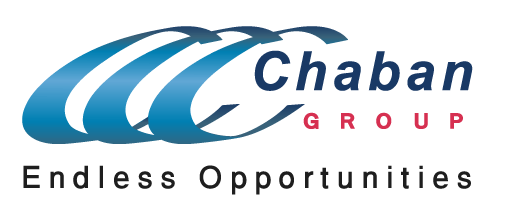The use of supplemental oxygen as a means of medical treatment was first recorded in the 18th century. Today it is widely used in the treatment of various health conditions.
Over the years, oxygen therapy has undergone significant development. Breath is life. And oxygen therapy has become an integral part of medical practice.
?What is oxygen and when was it first discovered
At a time, scientists were convinced that air on Earth consisted of carbon dioxide and hydrogen. This was until Joseph Priestly, a British scientist, discovered oxygen in the year 1775. Through his experimental research, he came to understand many other important gasses, including nitrogen, hydrogen chloride, carbon dioxide, and nitrous oxide. It was soon clear that oxygen was an extremely vital component of life. But in order for it to be used as the integral therapeutic technique that it is today, more research was necessary.
Oxygen is a gas that at room temperature is colorless, odorless, and tasteless. It sustains life on planet Earth. Ninety percent of the biochemical and metabolic activities in the body require oxygen. Our respiratory system takes in oxygen and releases carbon dioxide when we breathe. The circulatory system carries this oxygen to our cells and organs. Without it, or with an impaired amount, the body is quite simply unable to function. Oxygen is the most vital element for life.
When was oxygen first used as a therapeutic medical
?device
In the early twentieth century, scientists saw that the respiratory reflex was triggered by excess carbon dioxide in the blood, rather than a lack of oxygen. Yet, it was seen that administration of supplemental oxygen could be a remedy. Dr. George Holtzapple was the first physician to record a case report on the use of oxygen therapy in pneumonia patients, in the year 1887.
A revolutionary discovery in the development of oxygen therapy! A mere two years later, a medical device was invented that carried enough oxygen for intermittent use. This very first oxygen therapy device was made up of a glass mouthpiece attached to a silk bag filled with “manufactured air”. Oxygen was inhaled either directly from the tap on a storage bag or via a tube that was held in the mouth. Inhaling supplemental oxygen, at a higher concentration than the normal atmospheric air we breathe, allows for adequate tissue oxygenation.
As medical knowledge expanded, so did the development of oxygen therapy delivery systems. In the beginning, oxygen was administered strictly in hospital settings for respiratory conditions. Much later, in the 1950s, the first portable oxygen therapy was invented. With this new development, it could be used in ambulances and on the scene of medical emergencies. Later, in the 1970s, it was possible to own a personal oxygen therapy unit in the home. Very large and heavy, a supplier was needed to deliver these special oxygen tanks. Although, they were very different from the lightweight units we know today, a concentrator that purified oxygen within itself was a major advancement.
In what cases is oxygen therapy used in medical practice?
A wide range of problems can affect the amount of oxygen our bodies receive. Both lung dysfunction and other medical conditions that compromise blood flow inhibit the levels of oxygen in the body. This leads to hypoxia, or low blood oxygen levels.
In emergencies, oxygen is administered in cases of respiratory failure, cardiac arrest, or trauma. Receiving supplemental oxygen on the scene of the incident prevents hypoxia and reduces the risk of organ damage and death. During surgeries when patients are under anesthesia and the respiratory drive is temporarily suppressed, supplemental oxygen is administered to ensure adequate oxygenation, preventing complications during and after the procedure.
Respiratory conditions such as pneumonia, chronic obstructive pulmonary disease (COPD), and acute respiratory distress syndrome (ARDS) require oxygen administration to alleviate symptoms and enhance overall respiratory function. In palliative care oxygen therapy provides comfort and improves the quality of life for terminal patients. It helps alleviate breathlessness and eases the symptoms that are often seen when the body is shutting down.
Oxygen therapy is also very effective in wound healing. A space with high air pressure provides high concentrations of oxygen. This is referred to as hyperbaric oxygen therapy (HBOT). The increased air pressure improves the way the body takes up oxygen, helping to stimulate tissue repair and fight off infections. Hyperbaric oxygen therapy promotes the healing of complex wounds, non-healing ulcers, and tissue damage caused by conditions like diabetic foot ulcers or injury caused by radiation.
The development of oxygen therapy has gone so far as to create recreational oxygen bars! This new fad can be seen at music festivals, casinos, or as a free-standing business. The customers are healthy individuals who come to receive purified oxygen, sometimes with customizable flavors. These bars claim to boost energy levels, relieve stress, increase alertness, and even cure hangovers.
Today, oxygen systems can be stationary for use in medical facilities or small and mobile for easy transport. At Chaban Medical, a leading medical device production Israel company, we are proud to be responsible for the complete medical device product life cycle development of the OxyTec- 5S. This incredible oxygen therapy solution is a device that provides the highest standard of care. It is lightweight, user-friendly, and made for patients of all ages. Its award-winning design allows for convenient filter access for cleaning and maintenance and offers controlled oxygen output. From the ideas stage to the design and development process, to full manufacturing, sales, and aftercare, the OxyTec-5s was developed in-house by Chaban Medical, a leading oxygen concentrator manufacturers Israel company.
Oxygen therapy is a life-saving intervention that has transformed the way healthcare professionals manage medical conditions and emergencies. At Chaban Medical, we are masters at developing the most relevant and state-of-the-art medical devices for medical care, changing the lives of patients and caretakers around the world.
Learn More about Chaban’s Just Walk
We will get back to you as soon as possible.
Please try again later.



